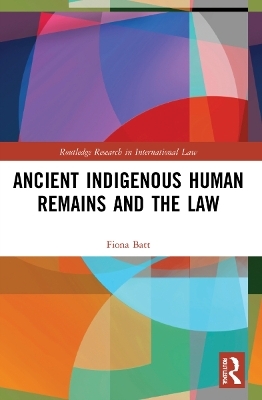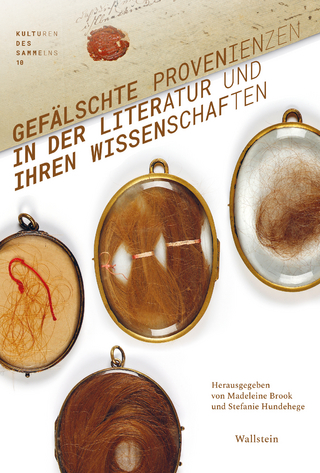
Ancient Indigenous Human Remains and the Law
Routledge (Verlag)
978-1-032-04769-0 (ISBN)
Indigenous peoples are increasingly making requests for the return of their ancestors’ human remains and ancient indigenous deoxyribonucleic acid. However, some museums and scientists have refused to repatriate indigenous human remains or have initiated protracted delays. There are successful examples of the return of ancient indigenous human remains however the focus of this book is an examination of the "hard" cases. The continued retention perpetuates cultural harm and is a continuing violation of the rights of indigenous peoples. Therefore this book develops a litigation Toolkit which can be used in such disputes and includes legal and quasi legal instruments from the following frameworks, cultural property, cultural heritage, cultural rights, collective heritage, intellectual property, Traditional Knowledge and human rights.
The book draws on a process of recharacterisation. Recharacterisation is to be understood to mean the allocation of an indigenous peoples understanding and character of ancient indigenous human remains and ancient indigenous DNA, in order to counter the property narrative articulated by museums and scientists in disputes.
Fiona Batt has a LLB, LLM, PGCE (PCE) and PhD from the UK. Fiona is lecturer in International Human Rights and International Public Law at St Augustine University of Tanzania (SAUT) and Project Coordinator of SAUT Human Rights Centre. She is also a former acting Dean of the University of the Gambia. She additionally spent some time at the Cambodian Centre for Human Rights as a researcher on an indigenous communities collective land titles project. Fiona is presently working on a project involving access to justice and legal education for vulnerable groups.
Introduction
PART ONE The recharacterisation of ancient indigenous human remains and ancient indigenous DNA
Chapter 1
Part TWO: Potential legal frameworks for the protection and repatriation of ancient indigenous human remains and ancient DNA: developing a litigation toolkit
Chapter 2: The status of Ancient indigenous human remains in cultural property and cultural heritage law
Chapter 3 Understanding cultural in the term cultural property and cultural heritage
Chapter 4: Ancient indigenous human remains and ancient indigenous DNA as collective heritage
Chapter 5 Ancient indigenous human remains and ancient indigenous DNA as Traditional Knowledge/Indigenous Knowledge
Chapter 6 Ancient Indigenous DNA as Intellectual Property
PART THREE
Chapter 7 A Human Rights Based Approach to the protection and repatriation of ancient indigenous human remains and ancient indigenous DNA
Chapter 8 Using strategic human rights litigation to protect and repatriate ancient indigenous human remains and ancient DNA
| Erscheinungsdatum | 06.08.2021 |
|---|---|
| Reihe/Serie | Routledge Research in International Law |
| Zusatzinfo | 2 Tables, black and white |
| Verlagsort | London |
| Sprache | englisch |
| Maße | 156 x 234 mm |
| Gewicht | 453 g |
| Themenwelt | Kunst / Musik / Theater |
| Reisen ► Reiseführer | |
| Geisteswissenschaften ► Geschichte ► Hilfswissenschaften | |
| Recht / Steuern ► Allgemeines / Lexika | |
| Recht / Steuern ► EU / Internationales Recht | |
| Recht / Steuern ► Öffentliches Recht | |
| ISBN-10 | 1-032-04769-0 / 1032047690 |
| ISBN-13 | 978-1-032-04769-0 / 9781032047690 |
| Zustand | Neuware |
| Informationen gemäß Produktsicherheitsverordnung (GPSR) | |
| Haben Sie eine Frage zum Produkt? |
aus dem Bereich


